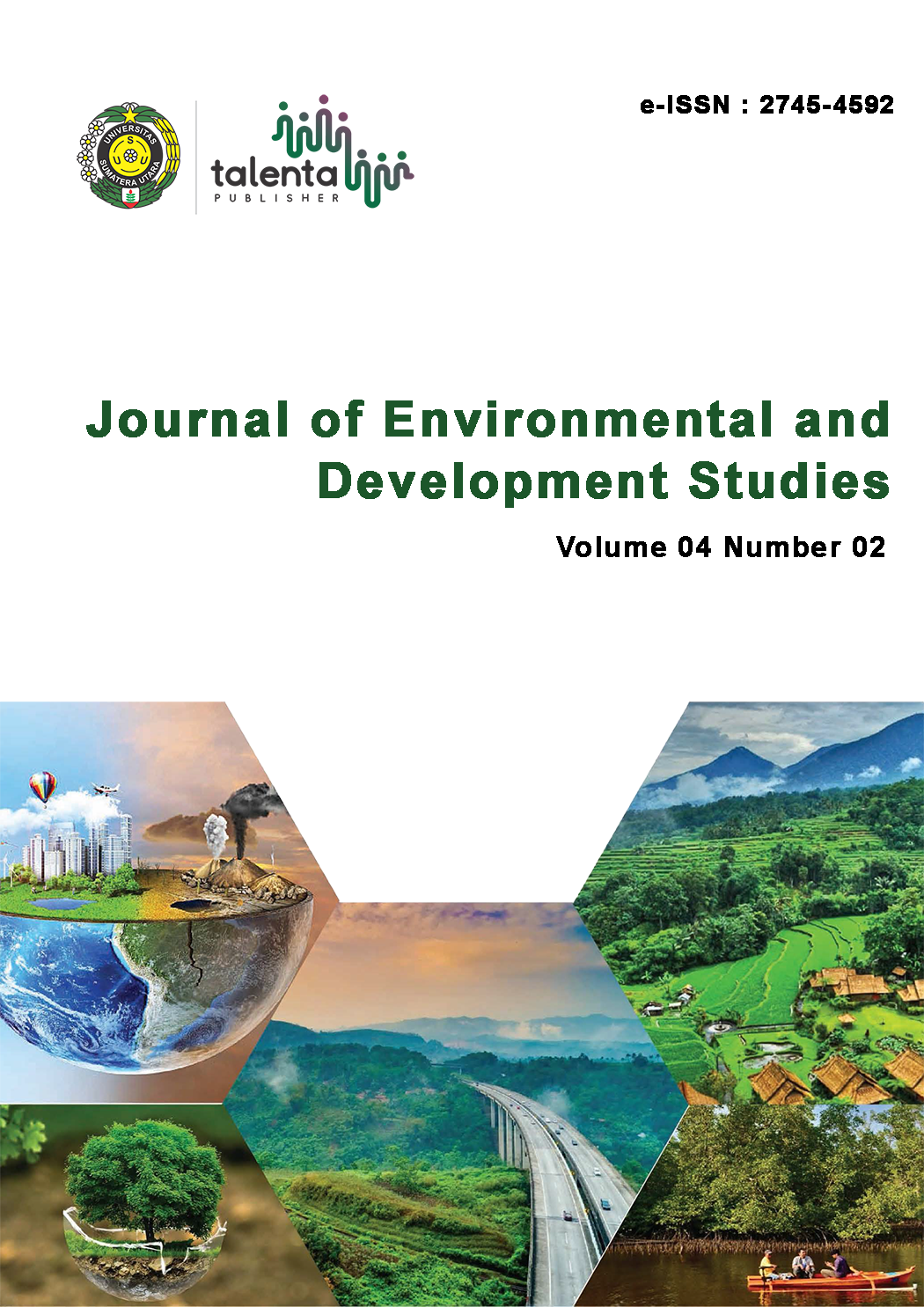Feasibility Study: Kapah Clam (Meretrix lyrata) Consumption Based on the Amount of Heavy Metal Lead (Pb) in Pulau Labu, Deli Serdang Regency
DOI:
https://doi.org/10.32734/jeds.v4i2.12498Keywords:
feasibility study, kapah clam (meretrix lyrata), heavy lead metal (Pb), maximum tolerable intakeAbstract
The hazardous heavy metal lead (Pb) can infiltrate the human body through the food chain. This study aimed to determine the maximum allowed amount of lead (Pb) and the lead heavy metal content in the meat of kapah clams (Meretrix lyrata) from Pantai Labu, Deli Serdang Regency, North Sumatra Province. This study used stratified random sampling in three locations: Bagan Beach, Muara Serdang, and Putra Deli. Heavy metal lead (Pb) measurements were conducted using the Parkin Elmer Atomic Absorption Spectrophotometry (AAS) method with an Atomic Absorption Spectrophotometer. Maximum Tolerable Intake (MTI) or Maximum Weekly Intake (MWI) is divided by the amount of heavy metal lead (Pb) in Kapah Clam meat (Meretrix lyrata) to determine the permissible consumption limit. As a result, exceeding the MTI limit can lead to toxicity.
Downloads
Downloads
Published
Issue
Section
License
Copyright (c) 2023 Journal of Environmental and Development Studies

This work is licensed under a Creative Commons Attribution-ShareAlike 4.0 International License.














